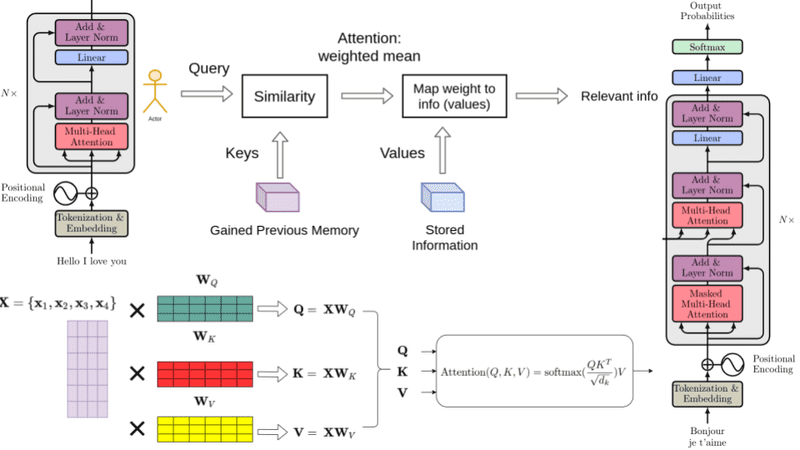
The Price of Progress: Deconstructing the Architectural Scaling and Soaring Costs of Modern GPT Models
The landscape of artificial intelligence has been irrevocably altered in just a few short years. What began as a niche academic pursuit has exploded into a multi-billion dollar industry, fundamentally reshaping technology, business, and society. At the heart of this revolution is the Generative Pre-trained Transformer (GPT) architecture. Yet, the journey from the foundational concept to today’s state-of-the-art models like GPT-4 reveals a staggering story of exponential growth—not just in capability, but in complexity and, most notably, cost. The price tag for training a frontier AI model has skyrocketed from a few hundred dollars for academic proofs-of-concept to hundreds of millions for commercial flagships. This dramatic escalation is more than just a line item on a balance sheet; it’s a defining trend that dictates who can build, who can innovate, and what the future of AI will look like. This article delves into the latest GPT Architecture News, deconstructing the factors driving this hyperscaling and exploring its profound implications for the entire AI ecosystem.
From a Simple Blueprint to a Digital Skyscraper: The Evolution of GPT Architecture
Understanding the current state of AI requires looking back at its architectural cornerstone: the Transformer. The journey from this elegant, relatively simple concept to the colossal models of today is a masterclass in the power of scaling laws and iterative refinement.
The Transformer’s Foundational Spark
In 2017, a landmark paper titled “Attention Is All You Need” introduced the Transformer architecture, dismantling the reliance on sequential processing (like RNNs and LSTMs) that had previously dominated natural language processing. Its core innovation, the self-attention mechanism, allowed the model to weigh the importance of different words in an input sequence simultaneously. This parallelizable design was the critical breakthrough that unlocked the potential for massive scaling. The original Transformer model, a proof-of-concept, was trained on a relatively modest budget, demonstrating a powerful new technique without requiring nation-state levels of compute. This initial work laid the groundwork for virtually all subsequent GPT Research News.
The Gospel of Scaling Laws
The primary driver behind the explosion in model size and cost is the discovery of “scaling laws.” Researchers at OpenAI and other labs empirically demonstrated a predictable relationship: as you logarithmically increase the amount of compute, the number of model parameters, and the size of the training dataset, the model’s performance on a wide range of tasks reliably improves. This hypothesis transformed AI development from a series of ad-hoc experiments into a more predictable engineering discipline. The latest OpenAI GPT News and GPT-4 News are direct results of this philosophy—the belief that building more capable AI is, for now, largely a function of investing more resources. This principle is the central theme in all GPT Scaling News.
Architectural Refinements and the Rise of MoE
While the core Transformer blueprint remains, the architecture has not stood still. Successive generations, from GPT-2 to GPT-3.5 and GPT-4, have incorporated significant refinements. One of the most important recent trends, as highlighted in GPT Architecture News, is the adoption of Mixture-of-Experts (MoE) architectures. Instead of activating the entire massive model for every single token, an MoE model uses a router network to direct each token to a small subset of “expert” neural networks. This allows for a dramatic increase in the total parameter count (improving model knowledge and nuance) without a proportional increase in the computational cost for inference. This makes models more efficient to run, a key topic in GPT Efficiency News, even if the training complexity remains immense.
Deconstructing the Cost: The Pillars of a Nine-Figure Training Run

The astronomical costs associated with training models like GPT-4 are not attributable to a single factor. Instead, they are the culmination of three massive resource sinks: computational hardware, curated data, and human oversight.
The Compute and Hardware Imperative
The most visible cost is the raw compute. Training a frontier model requires a supercomputer-scale cluster of tens of thousands of specialized AI accelerators, like NVIDIA’s H100 GPUs, running uninterrupted for months. The latest GPT Hardware News continually highlights the race for more powerful and efficient chips. The capital expenditure to acquire this hardware runs into the billions, and the operational cost, including electricity and cooling, is immense. Furthermore, sophisticated software stacks, covered by GPT Inference Engines news, are needed to orchestrate this hardware and later serve the model efficiently, with a constant focus on GPT Optimization News to manage post-training expenses.
The Petabyte-Scale Data Diet
A model is only as good as the data it’s trained on. Assembling the vast, diverse, and high-quality datasets required for a model like GPT-4 is a monumental undertaking. This involves scraping a significant portion of the public internet, licensing proprietary datasets, and generating synthetic data. The latest GPT Datasets News emphasizes the shift from quantity to quality, with extensive efforts in cleaning, de-duplicating, and filtering data to remove harmful content and improve performance. This process is further complicated by challenges in GPT Tokenization News, which deals with how text is broken down into processable units, and is critical for strong GPT Multilingual News and cross-lingual capabilities.
The Human-in-the-Loop: Alignment and Safety
A significant and often overlooked cost is the human element. Modern safety and alignment techniques, such as Reinforcement Learning from Human Feedback (RLHF), require large teams of human labelers to rate model outputs, write preferred responses, and identify harmful behaviors. This ongoing process is essential for making models helpful, harmless, and honest. As models become more capable, the nuance required in this feedback increases, making it a significant and continuous operational expense. This human-centric approach is central to all discussions around GPT Ethics News, GPT Safety News, and addressing critical issues highlighted in GPT Bias & Fairness News.
The Ripple Effect: How Hyperscaling Shapes the AI Ecosystem
The trend of ever-increasing model training costs has profound consequences that extend far beyond the balance sheets of a few leading AI labs. It fundamentally shapes the structure of the market, the nature of innovation, and the direction of future research.
The Great Divide: Centralization vs. The Open Source Movement
The nine-figure cost to train a frontier model creates an enormous barrier to entry, concentrating power in the hands of a few well-funded corporations. This has led to a vibrant debate covered in GPT Competitors News and GPT Regulation News. In response, a powerful counter-movement has emerged. The latest GPT Open Source News is filled with releases from organizations like Meta (Llama) and Mistral AI, who provide powerful, openly accessible models. While not always matching the absolute performance of closed, proprietary models, these open-source alternatives democratize access, allowing startups, researchers, and individual developers to build upon and inspect the technology, fostering a different kind of innovation.

The API Economy and the Application Layer
For the vast majority of businesses and developers, training a foundation model is out of the question. This reality has given rise to a thriving API-driven economy. Companies access powerful AI capabilities through services like the OpenAI API and others. This has ignited a Cambrian explosion of innovation at the application layer, as detailed in GPT Applications News. We see this across every industry:
- GPT in Healthcare News: AI assistants help doctors summarize patient notes and analyze medical research.
- GPT in Finance News: Models are used for market sentiment analysis and fraud detection.
- GPT in Legal Tech News: AI assists with contract review and legal research.
- GPT in Marketing News: Generating personalized ad copy and social media content at scale.
- GPT in Content Creation News: Powering tools for writing, art generation, and music composition.
The Urgent Quest for Efficiency
The immense cost of training and, just as importantly, inference (running the model) has made efficiency a top-tier research priority. The high operational cost of serving millions of users has spurred a wave of innovation covered in GPT Efficiency News. Key techniques include:
- GPT Quantization News: Reducing the numerical precision of the model’s weights (e.g., from 16-bit to 8-bit or 4-bit numbers) to decrease memory usage and speed up calculations.
- GPT Distillation News: Training a smaller, faster “student” model to mimic the behavior of a larger, more capable “teacher” model.
- GPT Compression News: Employing techniques like pruning to remove redundant parameters from the model without significantly impacting performance.
Navigating the Future: The Road to GPT-5 and Beyond
As we look toward the horizon, the trajectory of GPT architecture is poised to follow several key trends, moving beyond simple brute-force scaling to embrace multimodality, new architectures, and a greater emphasis on practical application.
Best Practices and Practical Recommendations
For developers and businesses looking to leverage this technology, the key is not to compete on training foundation models but to innovate on top of them. The most impactful GPT Trends News for practitioners involves specialization and application. Instead of building from scratch, focus on:
- GPT Fine-Tuning News: Adapting pre-trained models with your own proprietary data to create highly specialized versions for specific tasks. This is the core of building GPT Custom Models.
- Leveraging the Ecosystem: Utilize the rich landscape of GPT Tools and GPT Platforms News to build powerful applications quickly. Explore advanced concepts like creating autonomous systems, a hot topic in GPT Agents News.
- Focus on the User: The greatest value lies in creating seamless and intelligent user experiences, from advanced GPT Chatbots News to powerful internal workflow automations.
The Multimodal Frontier and GPT-5
The future is multimodal. The latest GPT-5 News and speculation point towards models that are natively designed to understand and process not just text, but also images, audio, and video. This is the focus of GPT Multimodal News and GPT Vision News. Architecturally, this requires fusing different types of data encoders and attention mechanisms, adding another layer of complexity and cost but unlocking transformative new use cases, from analyzing security footage to creating interactive content for GPT in Gaming News.
Conclusion: A Dual Path Forward
The story of GPT architecture is one of breathtaking ambition and scale. The journey from the original Transformer to the behemoths of today has unlocked capabilities that were once the domain of science fiction. However, the nine-figure training costs have created a new digital divide, raising critical questions about accessibility, centralization, and the environmental impact of AI. The future, as reflected in the latest GPT Future News, will likely not be a single path of ever-larger models. Instead, we will see a dual trajectory. At the frontier, a handful of players will continue to push the limits of scale, building ever-more-powerful multimodal foundation models. In parallel, a massive global effort will focus on efficiency, optimization, and democratization through open-source alternatives and innovative application of existing APIs. For businesses, developers, and society at large, navigating this complex landscape means focusing on value creation, ethical application, and leveraging the incredible power that now sits just an API call away.



